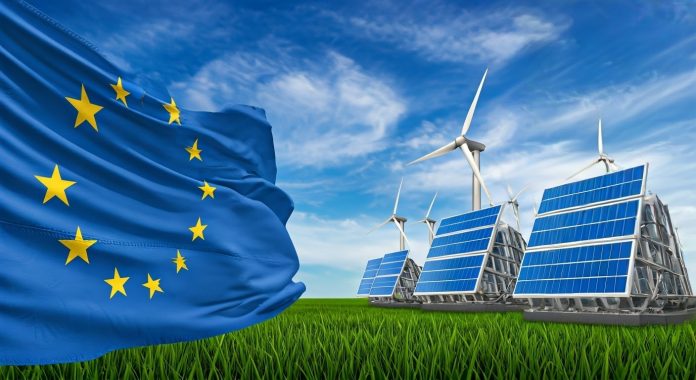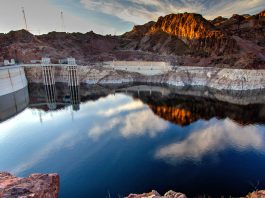The European Commission has released the 2024 State of the Energy Union Report, highlighting significant progress in the EU energy policy landscape amidst global crises.
As Europe continues its shift toward cleaner energy, the EU has responded to energy security risks, price volatility, and the ongoing transition toward climate neutrality. The report provides an overview of key developments and remaining challenges in EU energy policy.
Accelerating the clean energy transition
One of the major achievements of the EU energy policy in recent years is the rapid acceleration of renewable energy adoption.
As of mid-2024, 50% of the EU’s electricity comes from renewable sources, breaking capacity records and strengthening energy security.
Wind power, in particular, has overtaken gas to become the second-largest electricity source after nuclear energy.
This momentum is critical for the EU to meet its ambitious climate goals, which include reducing greenhouse gas emissions by at least 55% by 2030.
The diversification of energy sources has been another notable success. The EU has significantly reduced its reliance on Russian gas, dropping imports from 45% in 2021 to just 18% by mid-2024.
Alternative supplies from trusted partners, including Norway and the US, have helped stabilise the market. Alongside this, the EU has managed to meet its winter gas storage target ahead of schedule, ensuring that the region is better prepared for future disruptions.
Energy efficiency and reducing consumption
While progress has been made in renewable energy generation, energy efficiency continues to be a key area where the EU must step up efforts.
Between 2022 and 2024, the EU reduced gas demand by 138 billion cubic meters, a necessary step to reduce dependence on external sources.
Primary energy consumption in 2022 fell by 4.1%, continuing a downward trend, but further improvements are essential to achieve the 11.7% final energy consumption reduction target set for 2030.
There remains a pressing need to improve the electrification of heating equipment and accelerate the renovation of buildings to enhance energy efficiency. These actions are crucial for both reducing energy costs and advancing the EU’s climate neutrality objectives.
Addressing energy prices and competitiveness
The energy crisis of 2022 caused sharp price hikes, creating volatility in the market and impacting consumers and industries.
However, energy prices have stabilised in 2024, remaining well below the crisis levels. While this offers some relief, there is still a need to bring prices further down to boost the competitiveness of EU industries and safeguard consumers from future crises.
Investment in Europe’s integrated infrastructure networks is also vital for electrifying the economy. Enhancing these networks will not only help mitigate high energy prices but also support innovation in net-zero technologies.
Strategic initiatives to support the energy transition
The EU continues to lead globally in advocating for sustainable energy practices. At COP28 in Dubai, the EU spearheaded an initiative to triple global renewable energy capacity and double energy efficiency improvements, garnering international support.
Domestically, the Net-Zero Industry Act and the Critical Raw Materials Act are central to fortifying the EU’s energy strategy.
These frameworks aim to ensure the availability of critical materials for renewable technologies and boost the manufacturing capacity for net-zero technologies within Europe.
Industrial alliances, such as the European Battery Alliance and the European Clean Hydrogen Alliance, are also essential components, helping accelerate the development of key sectors for the clean transition.
Steps to empower consumers
The EU’s reformed Electricity Market Design aims to better protect consumers, especially the most vulnerable, from price shocks and disconnections during crises.
The introduction of the Social Climate Fund in 2026 will further support low-income households, with €86.7bn allocated to energy efficiency upgrades, affordable housing, and clean heating systems.
In addition to providing financial relief, the fund will contribute to broader investments in zero- and low-emission mobility and renewable energy, ensuring that the clean transition is inclusive and equitable.
Challenges and opportunities ahead
Despite the impressive achievements, several challenges lie ahead for EU energy policy. The ambition gap in renewables and energy efficiency targets remains, along with the threat of rising energy poverty and strategic dependencies on critical raw materials.
These issues demand coordinated action across the EU and Member States to avoid falling behind on the 2030 targets.
The 2024 State of the Energy Union Report underscores that while the EU has laid strong foundations for the clean energy transition, the coming years will require heightened ambition and collaboration.
By addressing these challenges, the EU can continue to lead the way in global climate action and secure its energy future.









